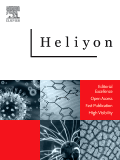Ver ítem
- xmlui.general.dspace_homeCentros e Institutos de InvestigaciónCICVyA. Centro de Investigación en Ciencias Veterinarias y AgronómicasInstituto de PatobiologíaArtículos científicosxmlui.ArtifactBrowser.ItemViewer.trail
- Inicio
- Centros e Institutos de Investigación
- CICVyA. Centro de Investigación en Ciencias Veterinarias y Agronómicas
- Instituto de Patobiología
- Artículos científicos
- Ver ítem
Detection of Sarcocystis aucheniae in blood of llama using a duplex semi-nested PCR assay and its association with cyst infestation
Resumen
The protozoon Sarcocystis aucheniae is the causative agent of South American camelid (SAC) sarcocystosis. Infections are characterized by the presence of cysts in muscles which are in size and appearance similar to rice grains. As consumption of insufficiently cooked infected meat produces gastroenteritis, cyst-containing SAC meat is confiscated by sanitary authorities or depreciated with serious economic consequences for SAC breeders. In this work, a
[ver mas...]
The protozoon Sarcocystis aucheniae is the causative agent of South American camelid (SAC) sarcocystosis. Infections are characterized by the presence of cysts in muscles which are in size and appearance similar to rice grains. As consumption of insufficiently cooked infected meat produces gastroenteritis, cyst-containing SAC meat is confiscated by sanitary authorities or depreciated with serious economic consequences for SAC breeders. In this work, a duplex semi-nested PCR was designed to simultaneously detect parasite and llama DNA in host blood samples. Species-specific regions of S. aucheniae 18S rRNA gene and Lama glama 16S mitochondrial gene were amplified, yielding bands of 583 and 257 bp, respectively, and separated by gel electrophoresis. The method proved to be highly sensitive, with a detection limit lower than one parasite per milliliter blood, and the inclusion of primers to detect llama-specific DNA resulted useful as a methodological control. Blood samples collected from llamas of Argentina and Bolivia (n = 225) were analyzed using this method, and 18.7 % resulted positive for S. aucheniae. No correlation was found between PCR results and llama age, sex or the finding of macroscopic cysts in meat after slaughter. Lack of molecular detection in the blood of some llamas harboring macrocysts suggests that parasite circulation in the bloodstream after encystment is under the detection threshold of the test or even absent, while PCR positive results in cyst-infested animals suggests that prior exposure to the parasite does not impede subsequent infections. The described method can be useful to detect active foci of infection, to assess the effectiveness of parasiticide treatments, and for the surveillance and tracing of definitive hosts.
[Cerrar]

Autor
Decker Franco, Cecilia;
Romero, Sandra Raquel;
Ferrari, Alejandro;
Schnittger, Leonhard;
Florin-Christensen, Mónica;
Fuente
Heliyon 4 : e00928. (2018)
Fecha
2018
Editorial
Elsevier
ISSN
2405-8440
Formato
pdf
Tipo de documento
artículo
Palabras Claves
Derechos de acceso
Abierto
 Excepto donde se diga explicitamente, este item se publica bajo la siguiente descripción: Creative Commons Attribution-NonCommercial-ShareAlike 2.5 Unported (CC BY-NC-SA 2.5)
Excepto donde se diga explicitamente, este item se publica bajo la siguiente descripción: Creative Commons Attribution-NonCommercial-ShareAlike 2.5 Unported (CC BY-NC-SA 2.5)


